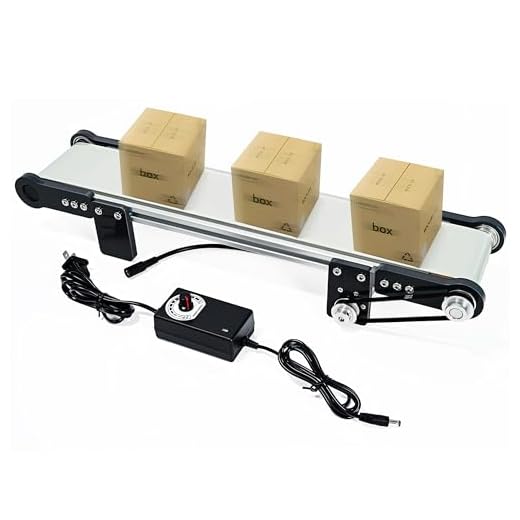

First, it’s crucial to understand the systematic transfer of your belongings once they disembark. Upon the aircraft’s arrival at the terminal, specialized equipment begins its operation immediately.
After deplaning, your bags are transported via automated baggage carts, which efficiently move them to the designated area. Each item is tagged with an RFID chip, which allows for real-time tracking throughout the entire process.
Next, the bags arrive at the unloading zone, where trained personnel unload them from the transport vehicles. The main goal is to execute this step rapidly while ensuring every piece remains intact. Automated conveyor belts then play a key role, moving the baggage toward the sorting areas.
Once sorted, your items are directed to the appropriate reclaim belt based on your flight’s destination. This meticulous coordination results in smooth handling, allowing travelers to retrieve their belongings with minimal wait time.
Lastly, for those concerned about security, rest assured that various checks are implemented throughout this transport phase, ensuring each piece reaches its rightful owner safely and securely.
Steps Involved in Unloading Luggage from the Aircraft
The unloading process begins with the aircraft parking at the designated gate, followed by the engine shutdown and the deployment of ground equipment.
Utilization of Specialized Equipment
Ground staff employ mobile stairways or jet bridges for passenger disembarkation. Simultaneously, specialized vehicles approach the aircraft equipped for unloading cargo. These vehicles include belt loaders and dollies designed to streamline movement.
Sequential Removal Process
Personnel access the cargo hold through the rear or side doors. Packages are removed systematically, prioritizing fragile or priority items. Staff utilize trolleys, ensuring seamless transfer to the terminal. Following retrieval, items are sorted based on airline, flight, and destination for efficient transit to baggage claims.
The Role of Ground Handling Crews in Luggage Transfer
Ground handling teams play a pivotal part in ensuring a seamless transition of travel belongings to the terminal. These skilled professionals coordinate various tasks, contributing significantly to the efficiency and reliability of baggage operations.
The first line of action involves communication with flight crews and air traffic control to receive precise information about docking and unloading schedules. This step is essential for timely dispatch.
Once the aircraft is stationary, ground handlers implement safety protocols, employing specialized equipment designed for efficient unloading. This equipment includes tugs and conveyor belts, which significantly speed up luggage movement from the aircraft to designated locations.
Staff members are trained to handle various types of bags, ensuring that delicate or oversized items receive extra care. Their training also covers emergency procedures, equipping them to manage unforeseen situations effectively.
After unloading, personnel sort the bags according to their destination within the airport, prioritizing connections and high-demand shipments. This organization minimizes wait times and enhances passenger satisfaction.
Ground teams utilize technology, such as tracking systems, to monitor the location of each piece of baggage. This real-time data helps keep travelers informed and reduces the risk of misplaced belongings. The efficiency of this operation is further enhanced by employing top-grade equipment like the best digital camera dslr under 200 low light to document and track items carefully.
In summary, the success of baggage management relies heavily on the dedication and expertise of ground handling crews, ensuring that each passenger’s experience is smooth and positive from the moment they arrive at their destination.
How Technology Assists in Tracking and Managing Baggage
Implement RFID technology for real-time monitoring of items during transit. Radio-frequency identification tags attached to bags send signals to scanners located throughout the airport, ensuring accurate tracking.
Utilize mobile applications enabling passengers to track their belongings via smartphones. These applications connect to the airline’s system, allowing travelers to see the current location of their items, which enhances communication and reduces anxiety associated with misplacement.
Incorporate automated baggage handling systems that optimize the flow of parcels through the sorting process. Conveyors and automated sorting machines handle items swiftly and accurately, significantly decreasing the potential for human error.
Employ AI algorithms to analyze data gathered from various sources, including passenger feedback and tracking information. This predictive analysis helps airlines preemptively address issues, such as delays or misplaced bags, ultimately enhancing service quality.
Implement secure cloud-based systems for unified data management. Centralized platforms allow for seamless sharing of information among airlines, ground services, and airports, improving the overall coordination during the transfer process.
Integrate barcode scanning for each piece of freight, enabling ground personnel to efficiently manage the flow of parcels. Scanning each item as it moves through different points enhances accuracy in tracking and provides immediate alerts if anomalies arise.
Utilize notification systems that inform passengers regarding status updates about their belongings. Alerts via SMS or email can keep travelers informed of arrival times or any issues encountered, fostering trust in air travel.
The Process of Transporting Bags to the Baggage Claim Area
The transfer of personal items to the designated collection point relies on several key operations.
- Initial Processing: After unloading, baggage is collected using specialized carts. These carts are designed for swift transportation across the terminal premises.
- Conveyor Systems: Once off the aircraft, bags are directed onto conveyor belts that lead to the sorting area. These systems efficiently route items toward the appropriate pickup zones.
- Sorting and Distribution: At this stage, an automated or manual sorting process occurs. Items are separated based on flight information and directed to their designated claim sections.
- Final Transfer: Sorted articles are then placed on the final conveyor belt, which carries them directly into the baggage claim area where travelers can collect their belongings.
Effective coordination between systems and personnel minimizes wait times for passengers. Regular maintenance of equipment and technology further enhances operational reliability, ensuring bags are available for retrieval promptly upon arrival.
Common Issues and Solutions in Luggage Handling
One prevalent challenge in the transfer process is misplacement. To mitigate this, implementing robust tagging systems with real-time RFID tracking can significantly enhance accuracy. Ensure every bag is tagged securely and monitor them throughout the entire transfer process.
Damaged Items
Another issue faced is damage to belongings during transit. To reduce the risk, travelers should invest in durable suitcases or backpacks, such as the best backpack for comic conventions, designed for robust handling. Ground crews should be trained in proper loading techniques and utilize protective padding where needed.
Delays
Delays in delivering cargo can occur due to a variety of factors including staff shortages or equipment failures. Establishing a detailed protocol for timely communication and backup equipment availability can streamline processes. Additionally, integrating modern software solutions can enhance coordination among teams to manage unforeseen delays effectively.
Furthermore, investing in equipment, like the best commercial backpack blowers, can expedite the transfer by efficiently clearing unloading areas, thus minimizing wait times. Addressing these common issues with strategic solutions can greatly enhance the overall experience for travelers.








